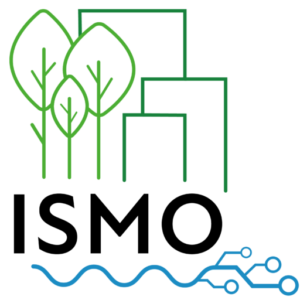In the Intelligent and Sustainable Stormwater Managementproject, Turku University of Applied Sciences, together with the City of Turku, is seeking solutions to stormwater and flooding problems through modelling. The ISMO project aims to establish a centre of expertise to develop better computational models for natural stormwater management, i.e. understanding rainfall and meltwater volumes, flows and natural management.
Three reasearch groups from Turku UAS’ faculty of Engineering and Business, Water and Environmental Engineering, Computational Engineering and Analysis and Built Environment join their know-how in a multidisciplinary research project.
Duration of the project: 1.1.2022-31.12.2024
ISMO will focus on the development of better numerical simulation models for understanding and predicting stormwater flows. This facilitates a deep understanding of the physical mechanisms, causal effects, and performance of different NBS in different weather conditions and by high-resolution 3D CFD models, with an aim at devising optimal design methodologies and guidelines that are scalable and transferable to other regions or environmental settings. The accuracy of low-fidelity 1D/2D SWMM-based stormwater models is improved by calibrating them by using locally high-fidelity 3D CFD models. The integration of real-time and in-situ monitoring of structures with computational models, demonstrates the capability of digital twinning in the context of NBS.
ISMO will establish principles of sustainable urban design that addresses sustainable stormwater management. This facilitates seamless connectivity between different infrastructure implementation stages through integrating digital construction model data (BIM) with 3D city and stormwater models. Moreover, this objective improves the usability and use of stormwater models and the Green Area Factor tool (used by city of Turku in the building permission process) in the urban design process through the demonstration of the models’ accuracy and robustness by utilising the digital twins. Finally, it fosters cross-departmental cooperation and uptake of sustainable design alternatives by organising tabletop exercises in the form of “serious gaming” for all stakeholders involved in the planning and realisation of stormwater management solutions, covering the whole lifecycle of NBS and hybrid solutions for stormwater management.
ISMO will be deriving robust conclusions and implications for policy making and for securing future green investments. This objective aims to convince authorities, policy makers, investors, and the general public of the importance of sustainable stormwater management. This will be achieved by deepening their understanding of the various added benefits and ecosystem services NBS can provide, by using digital twins and public data display as communication tools. Presenting methods for quantification and demonstration of the significant benefits of nature-based stormwater management solutions paves the way for considerable private and public investments in NBS.
